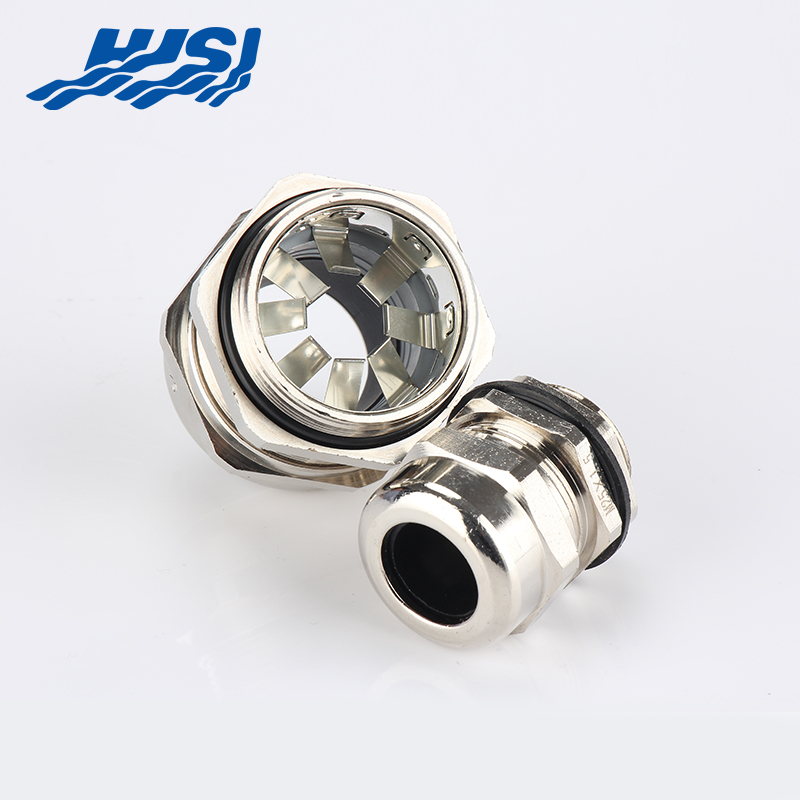A marine waterproof boat cable gland is a vital component in marine electrical systems, designed to secure and protect cables while preventing water ingress. These glands ensure the safety and longevity of electrical connections on boats, ships, and other marine vessels. Built to withstand challenging marine conditions, they provide reliable sealing and durability.

Marine cable glands are specifically designed to maintain a waterproof seal around cables that pass through bulkheads or enclosures. This sealing is achieved through high-quality rubber or elastomer gaskets that conform to the cable’s shape.
These glands are typically made of corrosion-resistant materials such as marine-grade stainless steel, brass, or durable plastics. The choice of material ensures the gland's ability to endure exposure to saltwater, humidity, and other corrosive elements common in marine environments.
Marine cable glands use threaded or compression fittings to secure the cable and maintain a strong seal. Threaded designs are often used in conjunction with marine enclosures to create a tight and lasting connection.
For installations exposed to sunlight and physical wear, marine cable glands are often UV-stabilized and designed to resist impact. These features are critical for maintaining their functionality over time.
The primary function of a marine waterproof boat cable gland is to prevent water from entering electrical enclosures. This sealing ensures that the electrical system remains dry and operational in wet and submerged conditions.
The glands provide firm cable retention, small the risk of cable movement or damage due to vibrations, pulling, or external forces. This is particularly important on boats, where movement is constant.
Marine cable glands are available in various sizes to accommodate different cable diameters. This versatility ensures that the gland can be used for a wide range of marine electrical systems.
Designed to endure temperature fluctuations, these cable glands maintain their integrity in both high and low-temperature environments, making them suitable for global marine operations.
Marine cable glands are designed for straightforward installation, requiring small tools. This simplicity helps save time during initial setup and maintenance.
Marine cable glands are used to route cables into control panels and electrical enclosures, ensuring a waterproof connection while protecting sensitive electrical components.
Boats rely on electrical systems for navigation, communication, and lighting. These glands provide the necessary sealing and cable retention to maintain the uninterrupted performance of these systems.
When cables need to pass through a boat’s deck or hull, marine cable glands create a watertight seal. This application is common for power cables, antenna lines, and sensor wiring.
In cases where electrical systems operate underwater, marine waterproof cable glands are essential for sealing and protecting the cables from water pressure and corrosion.
Boats equipped with solar panels use cable glands to route wiring from panels to batteries or inverters while ensuring the connections remain waterproof and secure.
By preventing water ingress, marine cable glands protect against electrical short circuits and fire hazards, ensuring the safety of the vessel and its occupants.
Corrosion-resistant materials and robust designs make these glands suitable for prolonged exposure to marine environments, reducing the need for frequent replacements.
Waterproof glands safeguard sensitive electrical components from moisture, prolonging the lifespan and reliability of marine equipment.
Their compatibility with various cable sizes and materials makes them suitable for diverse marine applications, from small recreational boats to large commercial vessels.
Marine waterproof boat cable glands are indispensable in maintaining the safety and functionality of marine electrical systems. Their robust construction, waterproof sealing, and ability to withstand challenging environmental conditions make them a reliable choice for boat owners and marine professionals.